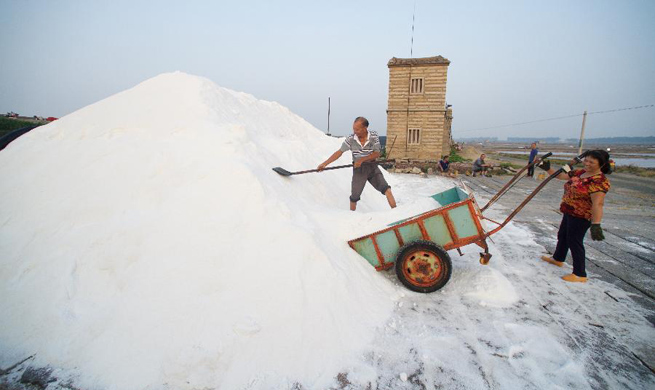CHICAGO, Aug. 6 (Xinhua) -- Chicago Board of Trade (CBOT) grains futures closed lower over the trade week, as dry and hot weather in crop belt improves and fund investors tun to large selling.
Corn futures ended lower on fund liquidation and cool central U.S. temperatures. Weather will have much less of an impact on yield moving forward.
Supply-driven rallies occur in July, and unless crippling drought continues in August, it's just the wrong time of year to sustain the market.
However, more and more of the trade is putting U.S. corn yield 161-165 bushels per acre, which is not wildly bullish but does suggest that supplies will be down some 450-700 million bushels from the United States Department of Agriculture's outlook in July.
In 2017/18 agricultural year, U.S. corn end stocks will rest between 1.7-1.9 billion bushels. Like wheat, a multi-year high in U.S. and global inventories was achieved in 2016, and major price changes will hinge upon South American weather this winter, and northern hemisphere plantings next spring.
Wheat futures ended sharply lower mostly on falling corn prices and fund long liquidation as Russian crop estimates continue to inch higher. Russia looks to harvest a record wheat crop, barring drought in Siberia in the next 3-4 weeks.
However, northern hemisphere harvest pressure is in fast retreat and in each year since 2010 Black Sea cash prices have formed their seasonal lows in early August.
Already U.S. Gulf wheat is the world's low cost origin, and with EU, Black Sea cash markets to inch higher into late year, analysts say a bearish outlook is not advised.
It was a week of liquidation in the soybean market with fund managers selling out their market length on last week's better soybean crop ratings and light rainfall across the western Midwest.
Rainfall across most of Iowa state in the last 60 days has been less than 80 percent of normal, with large pockets that have had just 30-50 percent of normal.
Based on the past week's rain totals, most analysts look for national good or excellent soy crop ratings on Monday to be close to unchanged, but still well under a year ago and near the long term historical average.
National Agricultural Statistics Service will release the August Crop Report next week, and based on current crop ratings, analysts look for a U.S. soybean yield near 47 bushels per acre. This, along with bump in old crop soybean exports will further tighten old and new crop balance sheets.

















